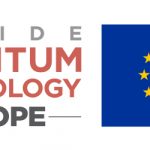Quantum Tunneling Enabled Development of Self-Powered Quantum Sensors

(EurekaAlert) The lab of Chakrabartty, the Clifford W. Murphy Professor in the Preston M. Green Department of Systems & Electrical Engineering at Washington University in St. Louis has been working to create sensors that can run on the least amount of energy. His lab has been so successful at building smaller and more efficient sensors, that they’ve run into a roadblock in the form of a fundamental law of physics. They turned to quantum physics to tunnel through.
Now, the successful development of these self-powered quantum sensors from the lab of Chakrabartty, the Clifford W. Murphy Professor in the Preston M. Green Department of Systems & Electrical Engineering, was published online Oct. 28 in the journal Nature Communications.
The roadblock that inspired this research is the threshold effect.
“Imagine there is an apple hanging from a tree,” Chakrabartty said. “You can shake the tree a little bit, but the apple doesn’t fall. You have to give it enough of a tug to shake the apple loose.” That tug is akin to a threshold energy. “It’s the minimal amount of energy needed to move an electron over a barrier.” If you cannot move the electron over the barrier, you cannot create current.
But naturally occurring quantum mechanical phenomenon move electrons across barriers all the time. The research team took advantage of this to build a self-powered device that, with a small initial energy input, can run on its own for more than a year.
Tunneling is one of the more unusual characteristics of subatomic particles. Imagine a hill, Chakrabartty said. “If you want to get to the other side, you have to physically climb the hill. Quantum tunneling is more like going through the hill.”
The beauty of this, he said, is that when the hill is a certain shape, you get very unique, dynamical properties that could last for years.
In this case, the “hill” is actually a barrier called a Fowler-Nordheim tunneling barrier. It’s positioned between the plate of a capacitor and a semiconductor material; it’s less than 100 atoms thick.























